Northern exposure
In Alaska, conspiracy theories and outdoor cannabis growing are in plentiful supply
I was staying in the small salmon fishing town of Cordova, Alaska (pop. 2,187) in June 2019. I was there for the week researching a story on wild salmon—this region produces some of the world’s best. I had planned to be away from home and stashed a cannabis oil cartridge and vape battery in my carry-on since I was pretty sure I wouldn’t be able to find cannabis flower. And since the summer solstice was approaching, I also brought CBD gummies with melatonin to combat the near 24-hour sunlight and any sleep issues that came with it.
At some point, I remembered that 1) weed is legal in Alaska! and 2) on the back end of my trip I had a 10-hour layover in Anchorage. It’s the state’s largest city and where the majority of its people live. I had been dreading it—there is nothing worse than a long layover when you’re just trying to get home—but now a grand opportunity had presented itself. I would go on a self-designed Alaskan dispensary tour!
After I landed in Anchorage, I ordered an Uber and planned to have it drop me at The Anchorage Museum. My driver, Patrick, was incredibly friendly and chatty right off the bat. I asked if he knew any good cannabis dispensaries.
“Do I!?!” he screamed. “I love weed! I’m a big smoker. My brother owns a grow in Redding,” he told me, referring to a Northern California town that sits at the gateway to the Emerald Triangle, which is California’s storied cannabis growing region. This was great news! “He’s a weed person,” I thought. He’ll at least be able to point me in the right direction. What could go wrong?
I mentioned that I wanted to visit a few while I was in town. Would he want to be my driver? While still driving, he swiveled around and handed me his card. The name of his supposed tour company was overlaid across an image of glaciers that I would later learn are in the Turnagain Pass, just outside of Anchorage. It seemed legit enough and I was out of options—I had a lot of luggage, so walking around downtown wasn’t an option.
“Sure, let’s do it. You can be my guide for the day,” I said to Patrick while texting two people, one in New York and the other in San Diego, to let them know my whereabouts and to sound the alarm if they don’t hear from me by 6 p.m. With that, we were off to the first stop.
Alaska’s history with weed cultivation has been much different and more confusing than California’s, to give the example I’m most familiar with. Thanks to a 1975 Alaska Supreme Court case, Ravin v. State, Alaskans have been able to possess up to four ounces for personal use in the home and up to one ounce outside of it. Medical cannabis was legalized in 1998, though dispensaries were not. Recreational use and dispensaries were legalized in 2014, but because the medical legislation never ushered in any kind of infrastructure, it meant an industry had to be built from the ground up--dispensaries, grow operations, packaging, you name it.
Years later, Alaska’s pot industry is finally coming into its own. Our first stop was Patrick’s favorite dispensary, The House of Green. A friendly woman named Erica helped me out.
“Honestly, we have some dank stuff here—but it’s probably nothing you haven’t had before, being from California.”
“Horseshit!” I said. “I’ve never had Alaskan weed before. Give me the best.”
I bought pre-rolled joints of two strains—a pine-scented hybrid called AK Cookies and Erica’s favorite, the Indica-dominant Birthday cAKe (emphasis not mine). I also bought Baked Alaska topical salve with 100 milligrams of CBD and THC.
We then stopped at another dispensary, the hilariously-named Dankorage. It appeared to have decent product but leaned heavily on its merch selection, which rubbed me the wrong way. I get it. Dankorage is a funny name. Then I found out it was the dispensary preferred by higher-profile Alaskans, including visiting celebrities, and I decided to bolt without buying anything.
Patrick let me light up in the back seat of his car, which was great since I was on somewhat of a schedule. He suggested we drive to a nearby glacier—this is Alaska, after all—and smoke while taking in the views. To my anxiety-ridden female brain, glaciers, while beautiful, equal “rural,” which means little recourse for solo me should things go wrong. Like, say, if Patrick wanted to murder me or whatever. Our conversation had been polite and animated and, though he was certainly an interesting character, I didn’t get bad vibes. You don’t survive decades of traveling alone as a woman, as I have, without a finely tuned gut, so I reasoned this was a risk I was comfortable taking. I checked my phone to make sure my friends still had my GPS location, sparked up a joint, and told him to head to the glacier.
That’s when shit got weird.
“You seem like an open-minded person—I wouldn’t tell this to just anyone,” he says while driving, echoing a few phrases that, frankly, I get told to me all the time in strange scenarios. One of the things that makes me decent at my job, I like to think, is that I am usually genuinely interested in hearing what people have to say about things, even and especially non-mainstream ideas. As a result, I sit through a lot of rants from random people, especially those in the cannabis community who love conspiracy theories.
“This is going to sound a little wacky, but stay with me. JFK Jr. didn’t die in that plane crash. He’s actually hiding out in a bunker, planning his return to civil society,” Patrick told me. I could feel my forehead scrunch and my eyebrows reach for my hairline—the physical manifestations of skepticism.
“Oh?” I managed to squeak out back at him. It’s important to remember that he’s not talking about our ex-President, John F. Kennedy, who was assassinated. There remain many questions surrounding his death. In other words, there is valid ground for conspiracy theories to spring up around it. His son, JFK Jr., however? I wasn’t aware there had been any question that he died when his small plane careened into the Atlantic Ocean with his wife, Carolyn Bessette, and her sister, Lauren.
What followed was a convoluted web that Patrick weaved for me, wherein he explained that JFK. Jr. had been long primed to take over the world and usher in a new golden age of respectability. His “death” was just an excuse for him to dip out and plot his eventual domination in solitude. The plan, a cabal of believers asserted, Patrick included, was to emerge on July 4, 2019, where he would announce himself as Donald Trump’s running mate. When he told me this, I remember pulling the joint away from my face, examining it, closing my eyes, taking a deep breath, and wondering what the fuck was in this weed.
Of course, we now know that such a plan never came to fruition. But this was June 20, 2019, just a few weeks before the supposed July 4 reveal. For Patrick and his crew of internet co-believers, who he told me were a group that believed in a philosophy called “Q” (according to my notes that I furiously typed into my iPhone as he typed, hoping he didn’t notice), this was the equivalent to the second coming of Jesus. We were right on the verge of installing a new world order, he said.
He also told me a few things that, in hindsight, I’m realizing were classic QAnon whistles that I didn’t know about at the time because I had never heard of QAnon. To put it as simply as I can for the uninitiated, QAnon is a vast conspiracy theory centered around the idea that there is this one poster, Q, who has high-security clearance within the U.S. Government and leaks seemingly-pertinent info about a “deep-state” conspiracy against Trump within the U.S. government.
There is an obsession with pedophilia and child trafficking to a degree that is, frankly, a ridiculous but perfect recruitment tool. Who is going to come out and say that pedophilia and child trafficking aren’t serious issues that should be looked into more? It’s the perfect reasonable-enough bait for those who might be already be flirting with conspiracy theories in an age where the government is as untrustworthy as ever. As for where I fall on the QAnon spectrum: I find it amusing and fascinating but ultimately false. There isn’t enough weed in the world to get me on board.
Patrick knew this. He said so several times— “I know this is hard to take in, but I think it’s cool that you can keep an open mind!”— but seemed resolute in his belief, even as it became clear I’d never take the red pill.
By this point, we were parked in front of an impressive row of glaciers. We were both smoking weed. Actually, I hadn’t stopped. My nerves were completely shot, so I was basically chainsmoking high-grade Alaskan chronic. During this stop, Patrick detailed the existence of Vincent Fusca, a Pittsburgh man who was said to actually be JFK. Jr. in disguise. T-shirts and masks with his likeness were extremely popular among the Q crowd. “He has a really nicely done van,” Patrick said.
He told me that Trump was the only politician willing to stand up to pedophiles. Donald J. Trump, the man who said he wantonly grabs women by the pussy, was here on this earth, Patrick said, to rid us of satanic forces. He told me to look into Kelli Ann at Hub News, as well as people named Jennifer Mac and Sarah Westoff on YouTube. He told me he had four shih tzus, each named for Hindu concepts, and that he was, “really into” pet nutrition. He encouraged me to look into C60, which is some Frankenstein carbon molecule of some sort, as an alternative healing modality. He said he was a fervent believer in Native rights and landback procedures. Patrick also told me he was an avid skier, an aerospace engineer, and a nearly-professional photographer.
At some point, he asked if I would like my picture taken. What followed was an elaborate iPhone photoshoot with me, a joint, and lush green woods behind me. It never once felt creepy. On the contrary, it was kind of nice. He understood lighting and posing and seemed committed, as I was, to getting the most quietly dramatic shot possible (below).
As the hours wore on and we ended up in a bird sanctuary that was surprisingly well-populated with humans (to my delight), I asked if he would drop me off in downtown Anchorage so I could have dinner with a food writer friend I knew in the city. I paid him the $70 we agreed on, he emphatically thanked me for my companionship and a friendly ear, and I thanked him for sharing his true self with me. He told me to keep in touch and I agreed, knowing I would probably never speak to him again.
I never forgot about Patrick in the last year or so—how could I?—but I didn’t make the Q connection until recently. I did remember that July 4 came and went last year with nary a mention of JFK Jr., much less his reanimation. A couple of weeks ago, I was talking with someone who is currently knee-deep in the TrueAnon podcast. Hearing him talk about it jogged my memory. The other night, while smoking a bowl and listening to this person tell me about QAnon, I popped back into my iPhone, scrolling through dozens of lines of rambling notes from god knows how many offbeat conversations just like the ones I had with Patrick.
“I’m telling you,” Patrick said to me in June 2019. “Just look into Q and Trump. It may not seem like a big deal now, but it’s a much bigger deal than you realize.” He might have been onto something, after all.
Growing Outdoors in Alaska
Anchorage-based writer Samantha Davenport is also here to tell us about outdoor growing in Alaska and what that means! Forgive me for being a dorky lower-48er, but I think it’s the coolest thing, ever.
I couldn’t have been older than 10 years old when I first heard about growing in Alaska: my dad told me that the closet of my childhood bedroom was floored out by former tenants who grew and cultivated weed. Later, my college roommate would grow her own sativa strains in the garage from little clones.
Indoor cultivation is how Alaskans have gotten their weed for decades. Cannabis was legal to some degree, federal law categorized — and still categorizes — it as a schedule one drug. Alaska was the first state to legalize the plant for in-home, personal use in 1975, with medical being legalized in 1998.
Leif Abel of Greatland Ganja grew up on the banks of the Yukon River; there was never a summer where his family wasn’t growing and harvesting vegetables, herbs, spices and cannabis.
“It was a very rudimentary lifestyle, in a really good way,” Abel told me. “I liked the connection you had with the environment that way and the patterns that you learn to see in mother nature. It is irreplaceable to grow up and see it.”
His father would plant a greenhouse of cannabis each summer. He grew previously but thought he didn’t have to hide it after 1975. It wasn’t a lot — just enough for him, his mother and a handful of friends.
Abel recalls people smelling the plants over the water and stopping by on river boats, including National Park Services employees. His family’s farm was raided by SWAT teams and Alaska State Troopers on more than one occasion.
Decades later, Abel and his brother, Arthur, are the co-owners of Greatland Ganja, a cannabis cultivation facility that harvested the first recreational crop in the state. Ultimately, Abel says it was a family decision on whether or not they wanted to dip their toes in the legal side of cannabis cultivation.
“I was glad for the opportunity — glad to move my small medical growing rig into a much larger avenue,” he said. “Literally in the first month, we were growing and running a ten-times bigger operation than we had ever run before.”
Despite the fact that Alaska turns into a wintry Bob Ross painting nine months out of the year, people still manage to grow cannabis outside here. Yeah, outside — as in -40 below temperatures and complete and utter darkness — that kind of Alaskan outdoors (it can’t be grown outdoors in the winter but wouldn’t it be cool if it could?).
As the only U.S. state with land within the Arctic Circle, Alaska’s amount of sunlight really varies. In the winter months, the northernmost city in the country, Utqiaġvik, won’t see the sun for over two months — but during the summertime, will have more than 80 days of sunlight for 24 hours a day, seven days a week.
I grew up in a small town about 75 miles outside of Alaska’s biggest city, where winter temperatures hover in the negative teens for weeks at a time. It was much easier said than done to go outside for a quick puff. In reality, you had to start the car, scrape ice off the windshield and make the trek over to your friend's house —who may or may not have their own plants growing in the basement.
I think I was 16 the first time I smoked. The ground was crunchy like it is in the frosty spring. Every breath was visible in the chilly air: it’s hard to imagine anything can grow and thrive in Alaska’s climate. We were getting ready for a high school band concert (sorry mom and dad) and smoking the most trash grass you could imagine out of a Dr. Pepper can. It didn’t do much for me then, but I do remember my two girlfriends who I was partaking with giggling incessantly.
My friend wasn’t alone. For a long time, many Alaskans kept their own personal plants and gave excess flower to friends and family as gifts. Today, Alaska law allows each resident to own a dozen plants, six of which can be flowering.
Chilly fall months make growing outdoors difficult, but Rosie Creek Farm in Fairbanks, Alaska is overcoming that hurdle. Although Fairbanks is around 200 miles south of the Arctic Circle, temperatures hit the freezing mark by September and it isn’t uncommon to have bouts of bitter cold for weeks at a time.
Rosie Creek Farm was the first to get a state cultivation license and has put their 20-plus years of gardening knowledge to work.
“This is a truly Alaskan product and a true product of the Tanana Valley,” Rosie Creek Farm owner Mike Emers told Alaska Cannabist. “It’s grown in Tanana Valley soil; it’s grown under the midnight sun; we use all organic fertilizers.”
Emers grows cannabis ruderalis — a variety of weed that automatically flowers instead of relying on light cycles. The plant has a low THC content and was first identified in Siberia. Cannabis sativa and indica would likely freeze before they’re ready for harvest, so breeders have learned to cross cannabis ruderalis with popular varieties. The farm begins seeding in March. By May, the plants are in the ground.
Before dipping his toes into commercial cannabis, Emers spent years growing vegetables and flowers galore. Now, the farm has an acre-and-a-half of land for cannabis cultivation, and additional high tunnels that are nearly 100-feet tall. There’s also a plot where dozens of experimental strains are bred.
Emers told Marijuana Business Daily that the high tunnels are covered in two layers of ultraviolet-resistant plastic film that are 6-millimeters a piece. He increases the insulation by punching holes in the bottom layer of plastic and using a fan to blow the second sheet, making an air buffer to allow heat in.
A 2017 report from the Southwest Energy Efficiency Project says indoor grow operations use 10 times as much energy per square foot compared to a typical office. Compared to indoor cultivation, outdoor growing consumes significantly less resources. Emers notes the respect he has for both indoor and outdoor cultivators.
“In the long run, for the planet, how we’re growing — whether it’s pot or food — we have an energy crisis, and we have a global climate warming crisis,” Emers told the Anchorage Daily News in 2019.
Samantha is a freelance writer and lifelong Alaskan who loves reporting on the state’s history, food and culture. She is a graduate of the University of Alaska Anchorage, where she received bachelors degrees in journalism and political science. She was the executive editor of The Northern Light — UAA’s student-run newspaper — for 2.5 years. She is currently the managing editor of The Spenardian, an award-winning hyper-local news blog and magazine for the neighborhood of Spenard. Follow her on Twitter to keep up with her.
*****
One last thing! Check out this online course by a San Diego cannabis chef, Jenn Felmley. She talks about making infused cocktails.
Thanks for being here! While this Cannabitch is free for you to read, it takes a LOT of time and money to put together. Please consider paying to support and subscribe today. If you know someone you think would like it, please share with them, as well!





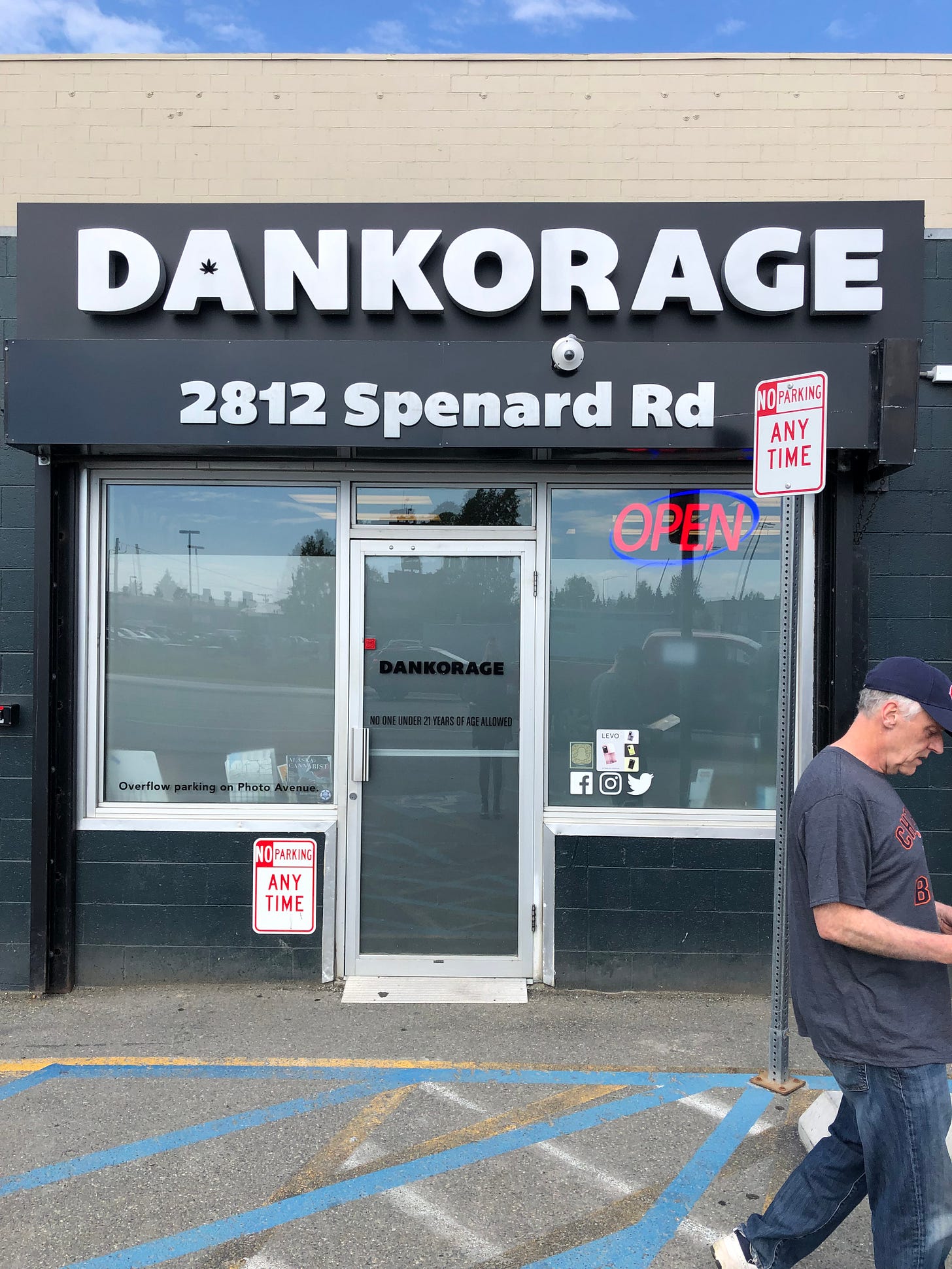
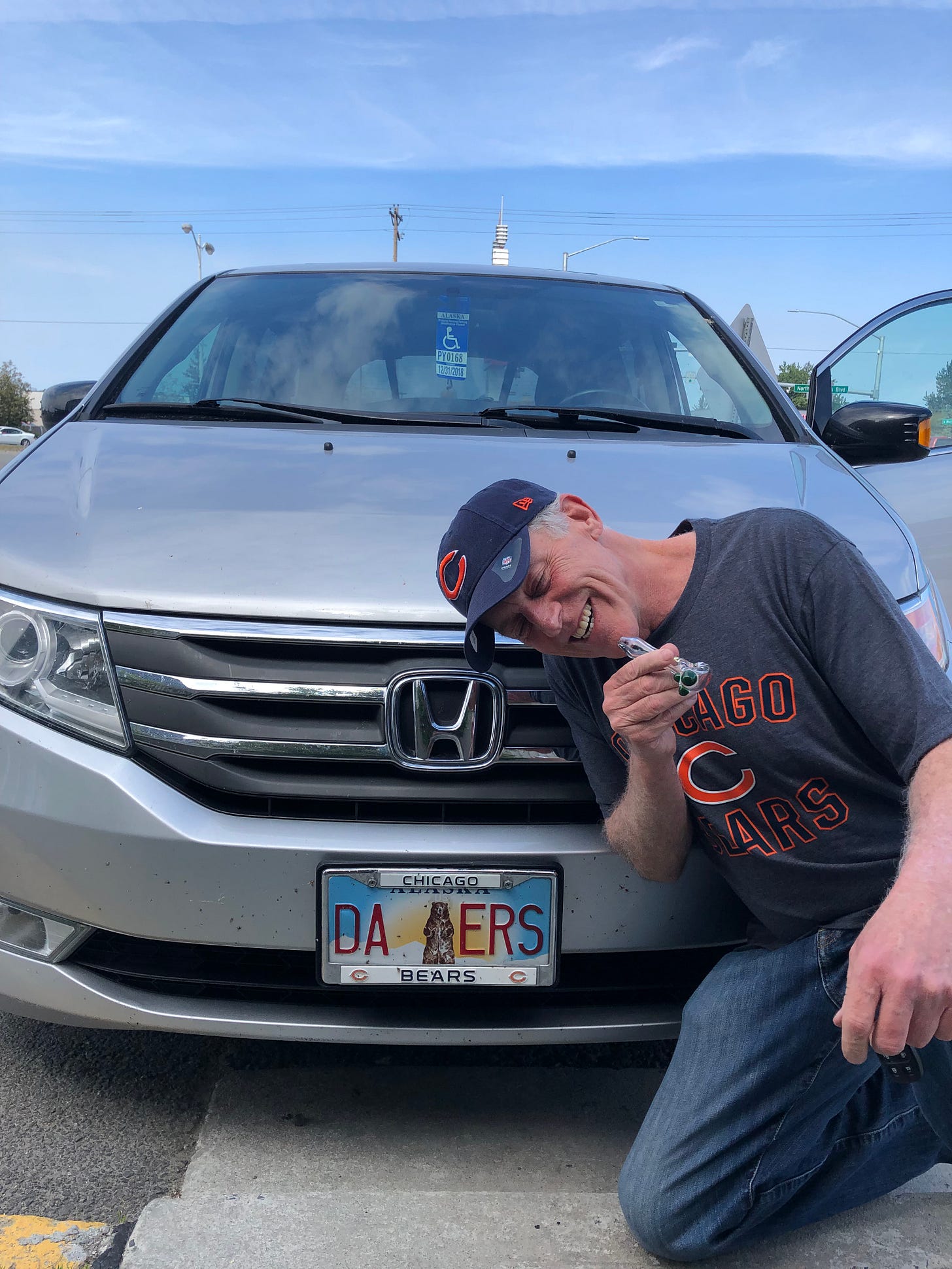
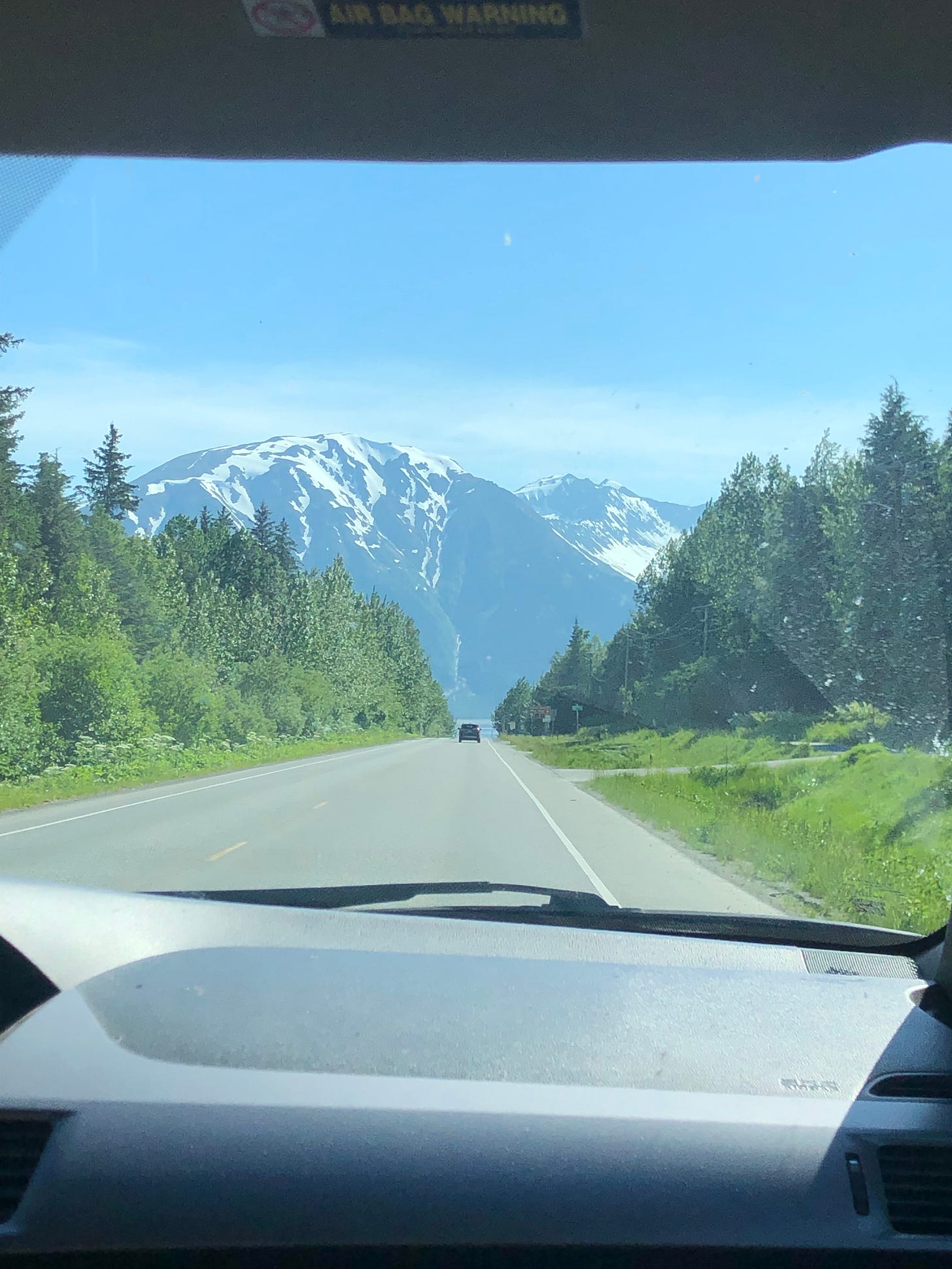
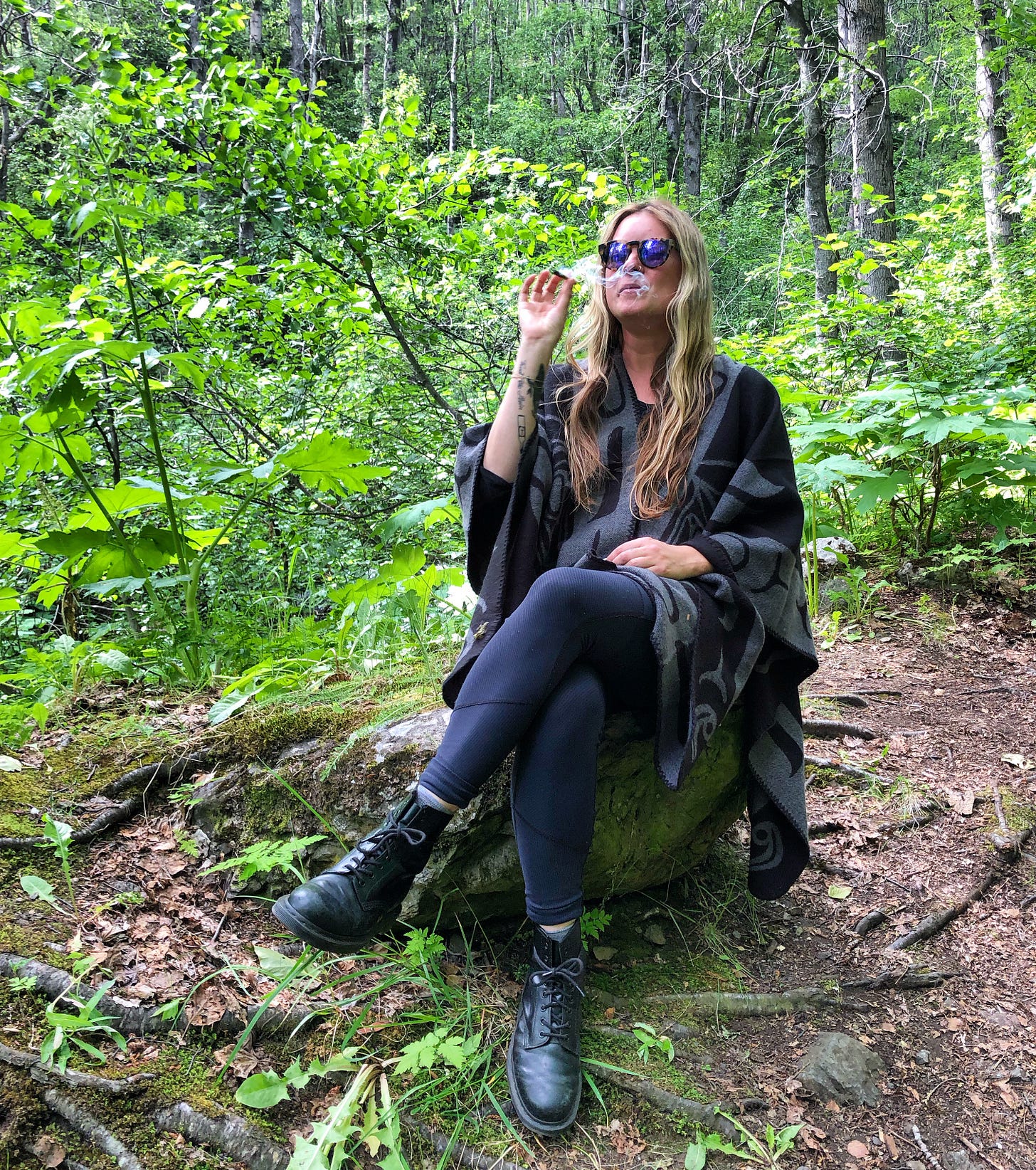
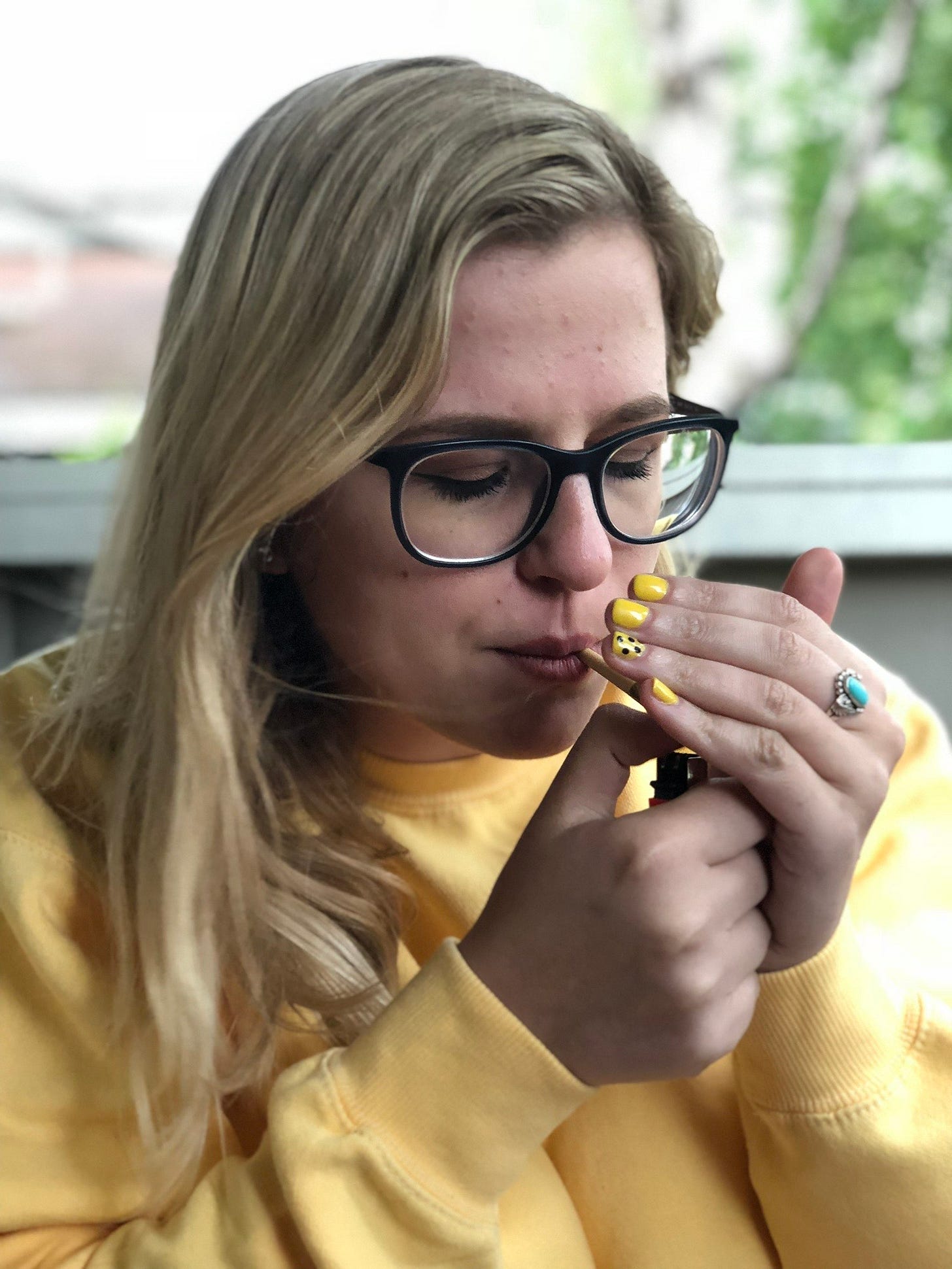
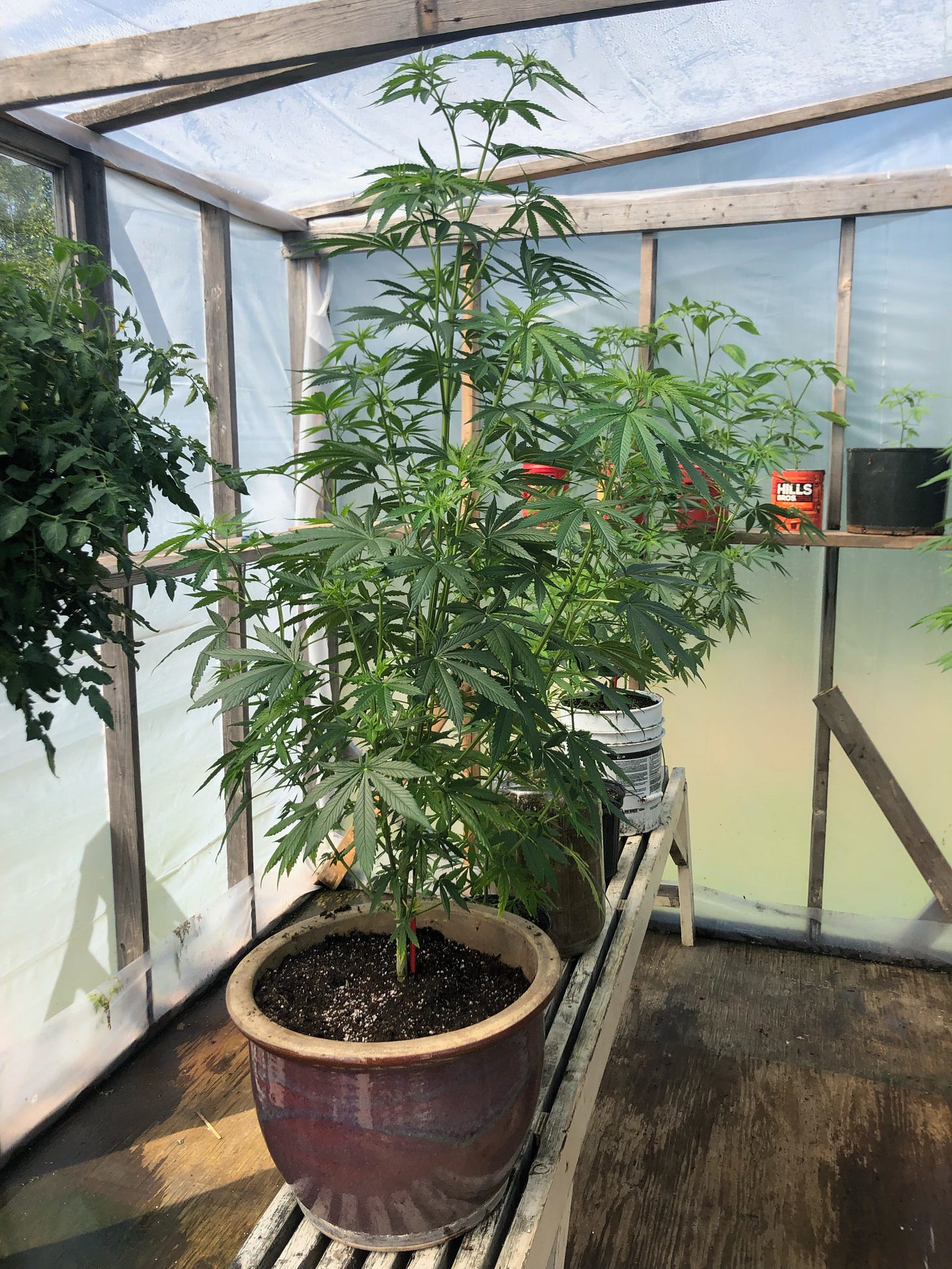
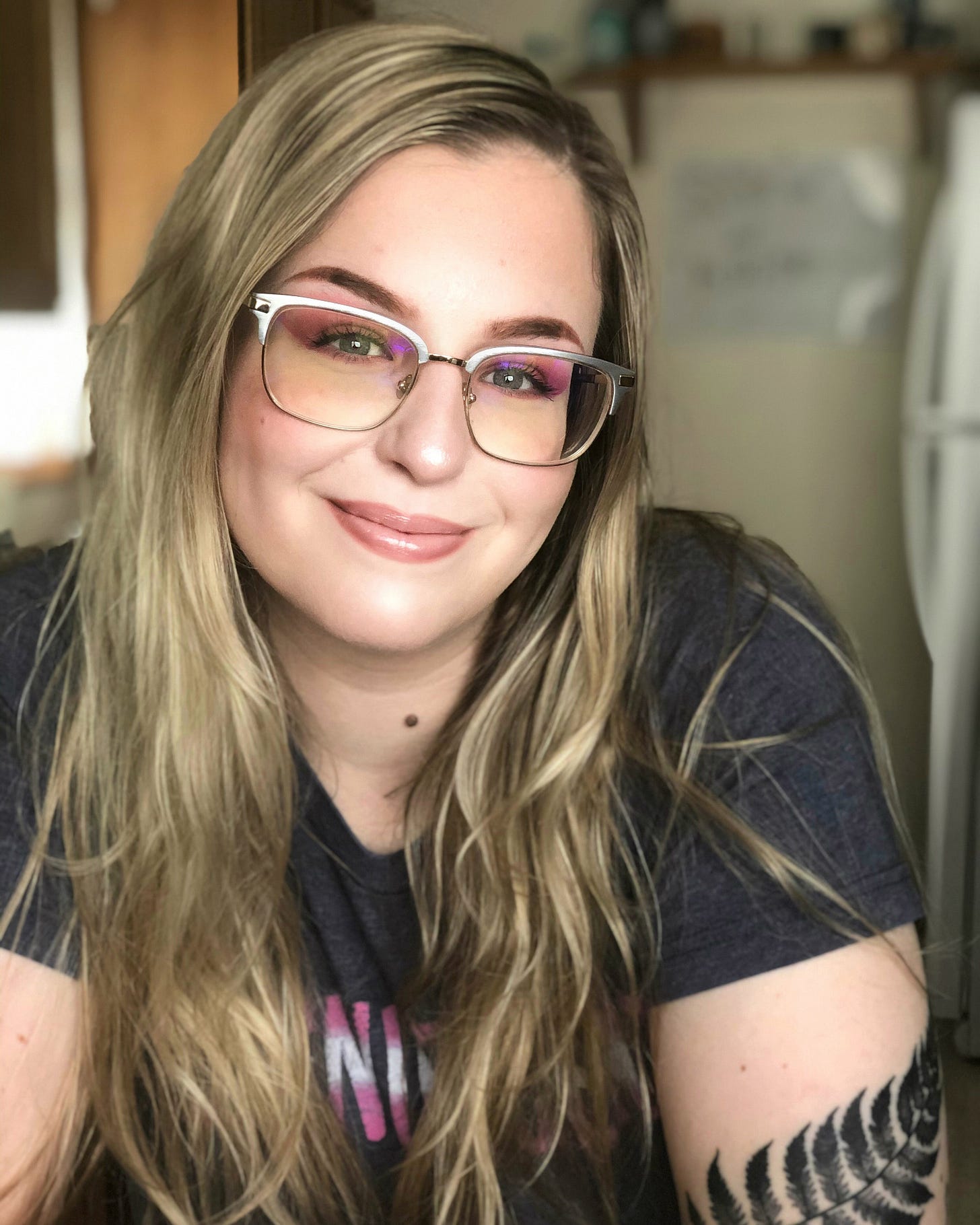
Following extensive research, I eventually found one of the essential keys to Political Wisdom :
Don't Get Carried Away.
The same axiom holds true for the ingestion of mind-altering substances.